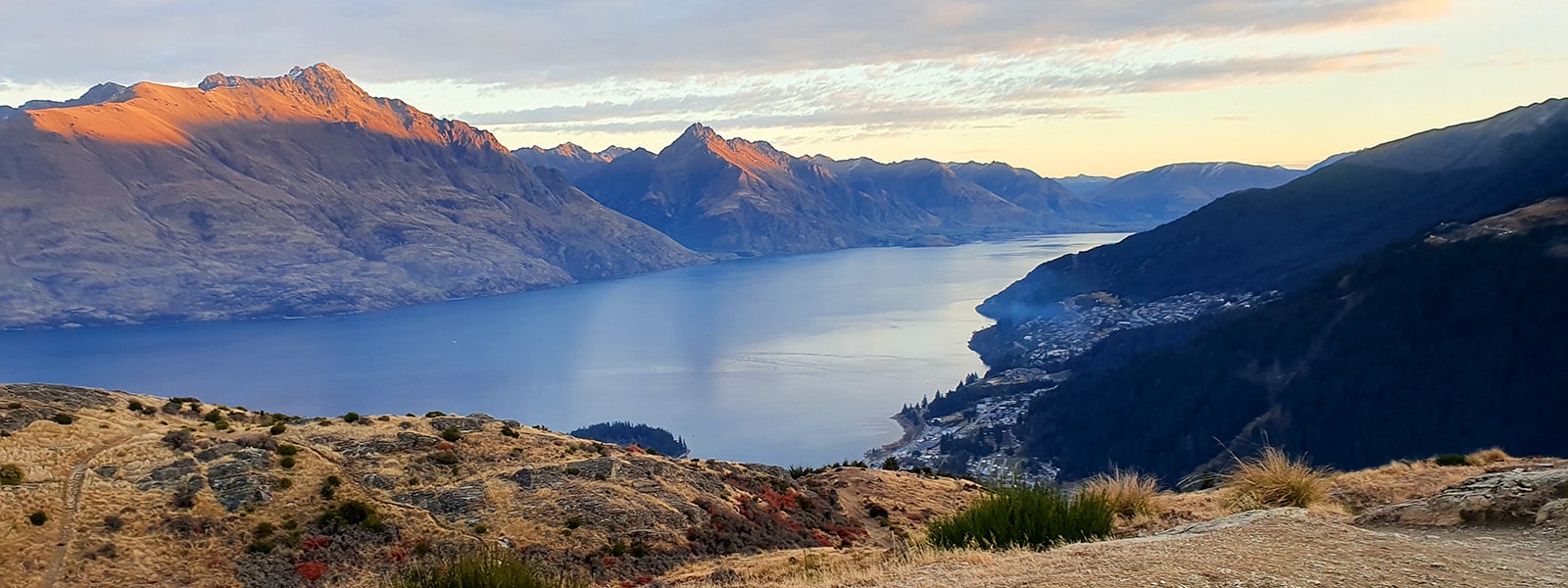Whakatipu Wai Māori (Lake Wakatipu) is the second largest of the southern glacial lakes, covering 290 square km. The lake is relatively thin, but the mountains run straight into the lake, forming a deep canyon, 399 meters at its deepest point. At its widest point Lake Wakatipu is five kilometers wide, and the total length is 84 kilo meters.
The lake is a large “S” shape, like a giant, curled up and sleeping on its side. The Maori legends state that the giant Matau was burnt to death in his sleep after he abducted a chief’s daughter, burning a massive hole in the ground and melting the ice and snow of the surrounding mountains, forming the lake. Matau’s head rested at Glenorchy, at the north of the lake, and his feet south in Kingston. Queenstown sits on Matau’s knee. (www.lawa.org.nz, www.queenstown.nz.com).
The glacially fed Dart and Rees Rivers have high water quality and flow into the northern end, constituting the major inputs into Lake Wakatipu. The immediate catchment is likely to contribute some nutrient input into the lake from agricultural, urban and industrial sources, especially around the township of Queenstown. The lake is drained by the Kawarau River, which flows out from the lake’s Frankton Arm, near Queenstown. At the foot of the lake is a natural dam of moraine.
Lake Wakatipu is renowned for its scenic beauty. It is surrounded by mountains with the iconic Remarkables mountain range along its southeastern edge.
Maori first inhabited the area in a search for food, ponamu or greenstone, and the flightless Moa. The north of the Lake is one of six of the country’s main sources of greenstone.


